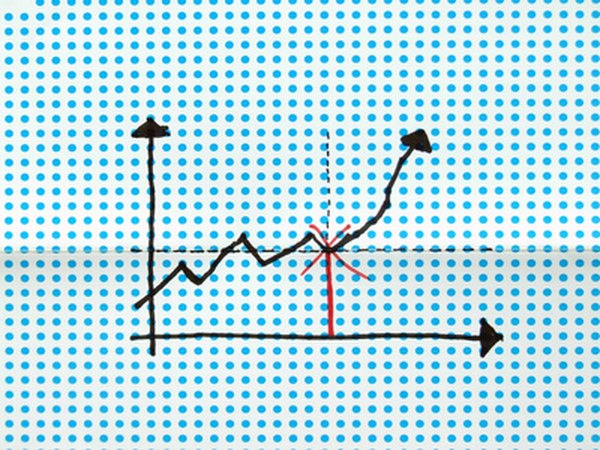What Does Alpha Mean in Stocks?
Alpha is positive if a stock price increases unexpectedly.
cyan stock graph drawing image by .shock from Fotolia.com
There are five popular risk ratios in investing: alpha, beta, standard deviation, R-squared and the Sharpe ratio. Alpha is based on a calculation that measures how well a stock has performed. This measurement considers a stock's volatility and risk adjusted performance when compared to a specific benchmark that has been set. An alpha stock of 1.0 is one that has exceeded its benchmark.
Tip
Alpha is a form of measurement used to track a stock's performance. This measurement is based on its volatility and risk-adjusted performance and is based on a benchmark.
About Stock Analysis
Stock market analysts use various methods to predict the performance of stocks. They develop models to analyze risk, compare a company's stock to risk-free investments, and calculate what the minimum return on the company stock should be to compensate investors for the assumed risk.
Investors that perform the same kind of analysis will buy the stock as long as the expected return is above the minimum. Alphas are among the terms used in this type of calculation.
Risk and Return
When investors buy stocks or bonds, they look at whether they can earn income and whether they are likely to get their money back. If there is no risk of losing their investment, they will settle for a low level of income. The higher the risk that they may lose part of their principal, the higher the income the investors will demand to compensate for the risk.
For equities, you may do well investing in risky stocks, but, over the long-term, you are likely to lose part of your investment when one of the companies with risky stock fails. Alpha finance calculations help reduce that risk by giving investors a way to predict a stock's performance.
Capital Assets Pricing Model
The Capital Assets Pricing Model calculates what return investors need to compensate for a specific level of risk. It defines a risk-free rate of return Krf, usually the rate on U.S. government Treasury bonds, and an expected rate of return Km. It subtracts the risk-free rate from the expected rate and weights it with a risk factor Beta to get a risk premium. It adds the risk premium to the risk-free rate of return to get Ks, the rate of return an investor requires as compensation for the risk.
The corresponding formula is Ks=Krf+B(Km-Krf). Alphas measure deviations from this rate of return. Alpha finance calculations may take time, but they're well worth it.
Alpha and Beta
The risk factor Beta influences how much return investors can expect as compensation for assuming the risk. It predicts the risk premium. Alpha stock is a measure of how accurate the prediction was.
When investors sell their stocks, they receive an amount which may differ from what they expected. Alphas express this difference as a percentage. If investors expected to earn 5 percent but receive 7 percent when they sell their stock, alpha is 2 percent.
Looking for Alpha
As an investor, you can earn above-average returns if you can find stocks with a high alpha. These are stocks whose price is too low because investors believe it carries a high risk. They have calculated their CAPM required rate of return and buy the stock at a correspondingly low price. Such mispricing can have many reasons including wrong information, market dynamics and fear.
If you think these investors are wrong and the stock is priced too low, you can buy it and wait for the price to increase. If you are right, you have found a high alpha stock. Unfortunately you don't know until you have bought and sold the stock.
References
Writer Bio
Bert Markgraf is a freelance writer with a strong science and engineering background. He started writing technical papers while working as an engineer in the 1980s. More recently, after starting his own business in IT, he helped organize an online community for which he wrote and edited articles as managing editor, business and economics. He holds a Bachelor of Science degree from McGill University.

